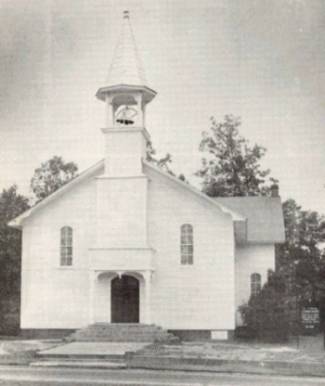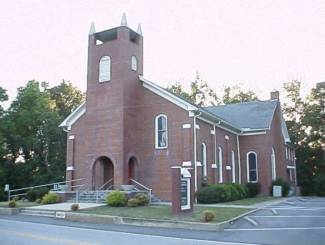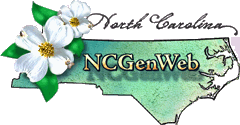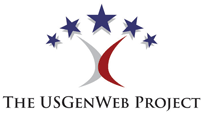History
Tradition and church records state that St. Stephen’s Church was founded by six prominent men who resided in the vicinity of Little Buffalo Creek in Cabarrus & Rowan Counties. In the year 1837, these men decided to organize a church in their “neighborhood.” On December 25th, 1837, John Peck, Solomon Nussman, George Culp, John Lentz, Peter Troutman and Henry J. Barringer, held an organizational meeting at John Peck’s home, and, with the help of a ministerial candidate from South Carolina, the Rev. Philip Strobel, thirty-two persons were enrolled as charter members of the St. Stephen’s congregation. In January of 1838, John Peck and Peter Peck gave five acres of land in Cabarrus County to the congregation, and upon what is today the church cemetery, a place of worship was constructed.
St. Stephen’s can trace its roots directly to the beginnings of the Lutheran Church in North Carolina. Five of the founders of St. Stephen’s were sons or grandsons of German immigrants who had originally migrated to America from Germany in the 1700’s. The sixth founder, Solomon Nussman, was the grandson of the first Lutheran minister in North Carolina, Adolphus Nussman
Prior to their founding of St. Stephen’s, the six men listed above, and most of the early members of the church, attended Organ/Zion Church and Grace/ Lowerstone Church in Rowan County, and Bethel/Bear Creek Church in Montgomery (Stanly) County. Organ Church was one of the first Lutheran churches in North Carolina, founded cir 1745. Lowerstone Church was founded in the 1790’s by members of Organ Church. Bear Creek Church was founded in the early 1800’s by former members of St. John’s Lutheran Church in Cabarrus County, which also dates its founding cir 1745.
As with many of the early German churches in the area, St. Stephen’s was a “union” church with both Lutheran & German Reformed members. However, the minister was Lutheran, and while there is no record of any sort of vote being taken, it must have been decided quite early to become affiliated with the NC Lutheran Synod. In 1838, St. Stephen’s received its charter as a member of the North Carolina Synod of Evangelical Lutheran Churches, and for the past 165 years, it has remained an active and contributing member of, what is today, the Evangelical Lutheran Church of America.
Several early ministers of St. Stephen’s were quite prominent in their ministerial careers.
Rev. Joseph A. Linn, who served St. Stephen’s from 1855 – 1863, was the President of the NC Lutheran Synod in 1852, when he proposed “the establishment of a High School of a Collegiate character,” which seven years later became North Carolina College, in Mt. Pleasant, NC.
Rev. Samuel Rothrock, who served St. Stephens longer than any other minister, from 1843-1854 and 1876-1879, was one of the most well known and influential Lutheran ministers in North Carolina. His recently published “Diaries,” which often mention St. Stephen’s, have provided an important record of the life and times of the Lutheran Church in the mid-19th Century.
Rev. Whitson Kimball, who served St. Stephen’s from 1880-1883, was a President & Secretary of the NC Lutheran Synod. In 1880, he served as the financial agent for NC College and preached in every congregation in the Synod, raising $15,000 for the college.
One father/son family also served St. Stephen’s. Rev. C. P. Fisher, Sr. served St. Stephen’s as a supply pastor in 1926-27. His son, C. P. Fisher, Jr. served as a supply pastor from 1986-1988.
Early members of St. Stephen’s also played significant roles in the founding of several other area churches.
Henry J. Barringer, one of the founders of St. Stephen’s later became a founder and charter member of Salem Lutheran Church in Rowan Co. NC.
Mathias Barrier, a Deacon at St. Stephen’s Church in the 1840’s, was a founding member of Holy Trinity Lutheran Church in Mt. Pleasant, NC. He was also the man who sold the land to the Lutheran Synod upon which North Carolina College was built. He continued throughout his life to be a driving force behind the College and the education of Lutheran’s throughout the state.
Several former members of St. Stephen’s were among the first congregation at Luther’s Lutheran Church in Rowan County.
Members of St. Stephen’s were also responsible for the founding of Mt. Olive Lutheran Church in Cabarrus County. In fact, St. Stephen’s and Mt. Olive remained “sister” congregations for many years, sharing ministers, a parsonage, and other religious activities.
The first church building at St. Stephen’s was built in 1838 on the present site of the “new” cemetery. While no photographs or drawings of the building are known to exist, tradition states that it was modeled closely after Organ and Lowerstone Churches, albeit, built from wood rather than stone. It was said to seat only 150 people and its pulpit was “of the elevated type that overlooked the congregation.” Several of the pews from the original church are still preserved in the balcony of the present church.
This first building served the congregation for forty-five years before it was replaced by a larger structure “across the road” where the present building is located. This second structure, began in 1880 and completed in 1883, was also built of wood but was somewhat larger than the first building. Like the first building, the second structure was built mostly by the members of the church themselves. In fact, the man who supervised the building of the first church in 1838, George W. Barringer, was also the foreman for the construction of the second structure.
In 1896, the congregation, in cooperation with its sister church, Mt. Olive, purchased a ten acre tract of land near the church and erected its first parsonage which was first occupied by Rev. P. H. E. Derrick. This residence was later sold, but it is still owned and occupied by a member of the congregation.
In 1910, a belfry was added to the church. Several rooms were added to the church in 1925, and the pews and floor were replaced in 1937. In 1949, an educational building was built near the site of the original church, and in 1958, the building was completely remodeled by replacing the wood siding with brick, adding three floors of Sunday School rooms, and replacing the old belfry with a new bell tower.
These buildings continue to be used today. Recently the congregation has made several improvements to the Church building by replacing the roof, upgrading the internal facilities, and improving the landscaping. A long term project still in the planning stages is to remodel and enlarge the educational building.
During its long history, the congregation at St. Stephen’s, has continued to play a major role in the life of the surrounding community. Church and Synod records note numerous contributions made by the congregation to various projects and other religious endeavors of the Evangelical Lutheran Church in North Carolina and throughout the world. Recorded are contributions to old NC College in the 1800’s, funds given for missionaries both in the United States and overseas, and many contributions given for disaster relief and for world hunger.
Beginning in 1902, the women of St. Stephen’s, then known as the Lutheran Church Women, began to hold fund raisers, donating money to various causes. In 1902, dues were five cents a month. In that year a special donation was made to foreign missions. In 1903, egg money was donated for special causes. “Every other month Mrs. Jane Misenheimer gave five cents for special offering.” “Mr. Perry’s family was given $1.00 to help with moving expenses from Virginia to NC.” In 1906, and oyster supper raised $4.67. In 1909, half of the money raised by selling refreshments at the Church picnic was donated to foreign missions. In 1911, $5 was given to the China Famine fund. In 1921, $5 was sent to help build a Seminary to educate Foreign Ministers. In 1925, the Lutheran women decided to buy some flannelette to make children’s dresses for the Foreign Fields. Thirty yards of cloth was donated from which twenty dresses were made.
During the 1960’s & 70’s St. Stephen’s sponsored a Boy Scout Troop which produced many Eagle Scouts. One adult member of the congregation was awarded the most prestigious award given by the BSA, the Silver Beaver Award, for his contibution in time and labor in the construction of Camp J. J. Barnhardt in Stanly Co. NC
In 1990, St. Stephen’s was blessed by being named as a the recipient of sizable endowment given by Mrs. Ruby Lentz Borher, an former member of the congregation and a descendant of one of the original founders of the church. This endowment has allowed the church to extend its efforts to support, not only its own needs, but various other causes of the Lutheran church worldwide.
Even with the presence of the endowment, the congregation has not reduced its other efforts to contribute. In recent years the Lutheran Women and Men have held annual noodle suppers and barbeques, designating funds to be contributed to such causes as World Hunger, Word Alone, Global Missions, and Cooperative Christian Ministry. In 2001, the members collected a special offering, and combined with offerings of other local churches, contributed over $8,000 to the Lutheran Congregation at Rocky Boy Indian Reservation in Montana. This money was delivered personally by St. Stephen’s Interim Pastor, Rev. Floyd Bost, who, with members of several local North Carolina Lutheran congregations, spent several weeks at the reservation helping to construct a new church.
Currently, many members of the congregation of St. Stephen’s are senior citizens and, as a result, the church maintains a strong senior citizen focus. But at the same time we are working to develop outreach programs for children and youth.
The “caring & sharing” program pairs members of the congregation with senior citizens in the community (members & non-members) in an attempt to provide meaningful experiences and relationships for both the older and younger participants.
St. Stephen’s Vacation Bible School is open to persons (members & non-members) of all ages and this past year over 40% of those attending were non-members.
In August of this year, the Church began a preschool program for 3 & 4 year olds which seeks to include children throughout the community.
Today, 167 years after their church began, St. Stephen’s 144 members continue to maintain a close relationship with their past -70% can trace their family lines to one or more of the 32 members of the first congregation. But at the same time, we look to the future and seek to remain a viable and contributing part of our community, practicing and encouraging Christian fellowship and stewardship, and spreading the word of God to those with whom we live, work and worship.
Transcript of St.Stephen’s Deed
From Book 14, pg. 93 Record of Deeds for Cabarrus County, North Carolina
State of North Carolina, Cabarrus County, January 16th AD 1838. To all to whom these presents may come. Know ye, that we Jno Peck & Peter Peck of the County of Cabarrus & State aforesaid, for & in consideration of the good will & affection which we have towards the Evangelical Lutheran & German Reformed Congregation known as St. Stephens Church situated on Little Buffalo Creek in the County & State aforesaid, have given & granted & by these presents do, so give & grant unto the aforesaid Evangelical Lutheran & German Reformed Congregation (the sect or party known by the name of Henkelites, are however hereby excluded) and to their Church Council who are Jno Lentz, Solomon Nussman, & Charles Barrier & to their successors in office, for the use & benefit of said Church a certain tract of land situated lying & being in the State & County aforesaid & on the waters of Little Buffalo Creek adjoining the lands of John Peck & George Eagle. Beginning at a small Hickory on Geo. Eagle’s line S80W26 poles to a Stake, thence N720W18 poles to a Stake, thence N390W18 poles to a Spanish Oak, thence N340W13 poles to an Ash near a Spring, thence N220E6 poles to a Stake on George Eagle’s line, thence parallel with his line S720E39 poles & five links to the starting place containing by survey five acres and eighty-seven squar & to have & to hold the aforesaid lands & premises & every part thereof, with all the woods, ways, waters & watercourses & every the appurtenances there unto belong & do hereby give free possession unto the aforesaid Congregation & to the aforesaid Church Council & to their successors in office, without any manner of reserve whatever.
In witness whereof we have set our hands & seals this 18th day of January AD 1838.
Witnessed by
Philip Strobel, [Ja Jmored?] Peck (Seal) Peter Peck (Seal)
State of North Carolina July Sessions 1838. I …. P. Harris, Clerk of this Court of Pleas Cabarrus County at the Quarter Session for the said County do Certify that the execution of this written deed of gift was duly proven in open Court by the Oath of Philip A. Strobel the submitting witness of this record let it be registered.
Registered the date above
William S. Hill, Registrar
Ministers of St. Stephen’s Lutheran Church
Philip A. Strobel 1837-1843
Samuel Rothrock 1843-1854
Joseph A. Linn 1855-1863
Levi Cook Groseclose 1864-1866
R. L. Brown 1866-1873
W. R. Ketchie 1873
Philip A. Strobel 1874-1875
Samuel Rothrock 1876-1879
W. Kimball 1880-1883
A. D. L. Moser 1885-1887
George H. Cox 1888-1894
I. M. Lingle (Supply) 1894
P. H. E. Derrick 1895-1896
Calvin Miller (Supply) 1897
George A. Reiser 1898-1899
W. A. Dutton 1900-1907
H. E. H. Sloop 1907-1909
G. H. L. Lingle 1910-1914
C. M. Fox 1914-1916
M. L. Ridenhour 1917-1919
M. L. Kester 1919-1921
Earl K. Bodie 1921-1924
J. A. Yount 1924-1926
C. P. Fisher (Supply) 1926-1927
W. H. Dutton 1927-1938
Clyde A. Misenheimer 1939-1943
Glenn A. Miller 1944-1950
Guy C. Cruse 1951-1954
Grey L. Freeze 1954-1958
J. Daniel Brown 1959
John F. Taylor, Jr. 1959-1963
Curtis K. Wise, Jr. 1963-1968
James E. Walker (Supply) 1968-1975
William E. Smith 1976-1983
Bill J. Duncan 1983-1986
C. P. Fisher (Supply) 1986-1988
John Stirewalt 1988-1991
Howard Baker (Interim) 1991-1992
Alfred Rhyne (Interim) 1992-1993
William Hoss 1993-1998
Floyd Bost (Interim) 1998-




